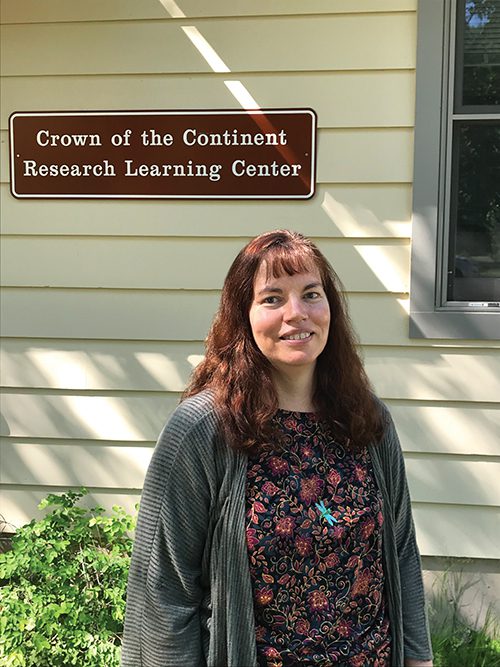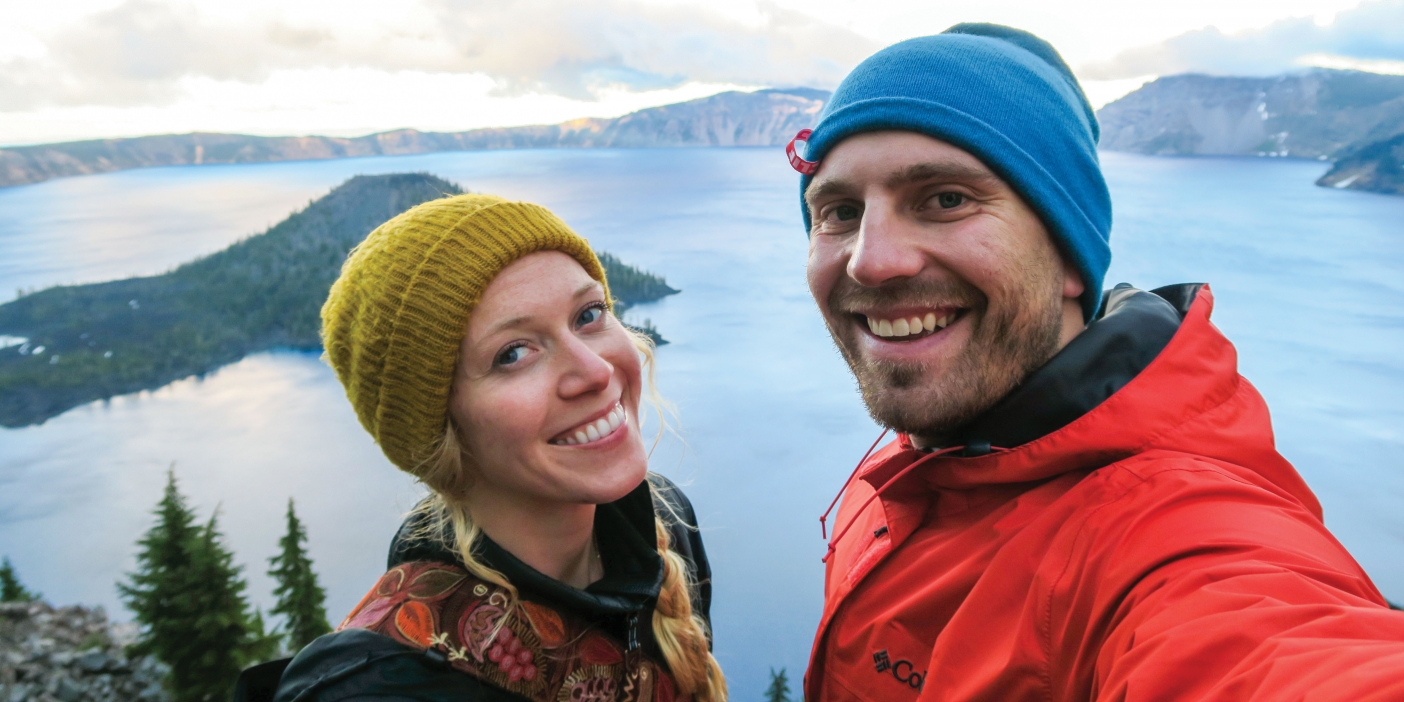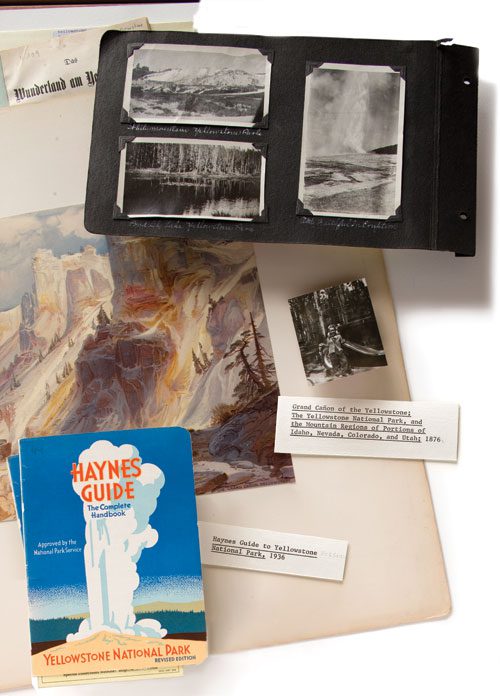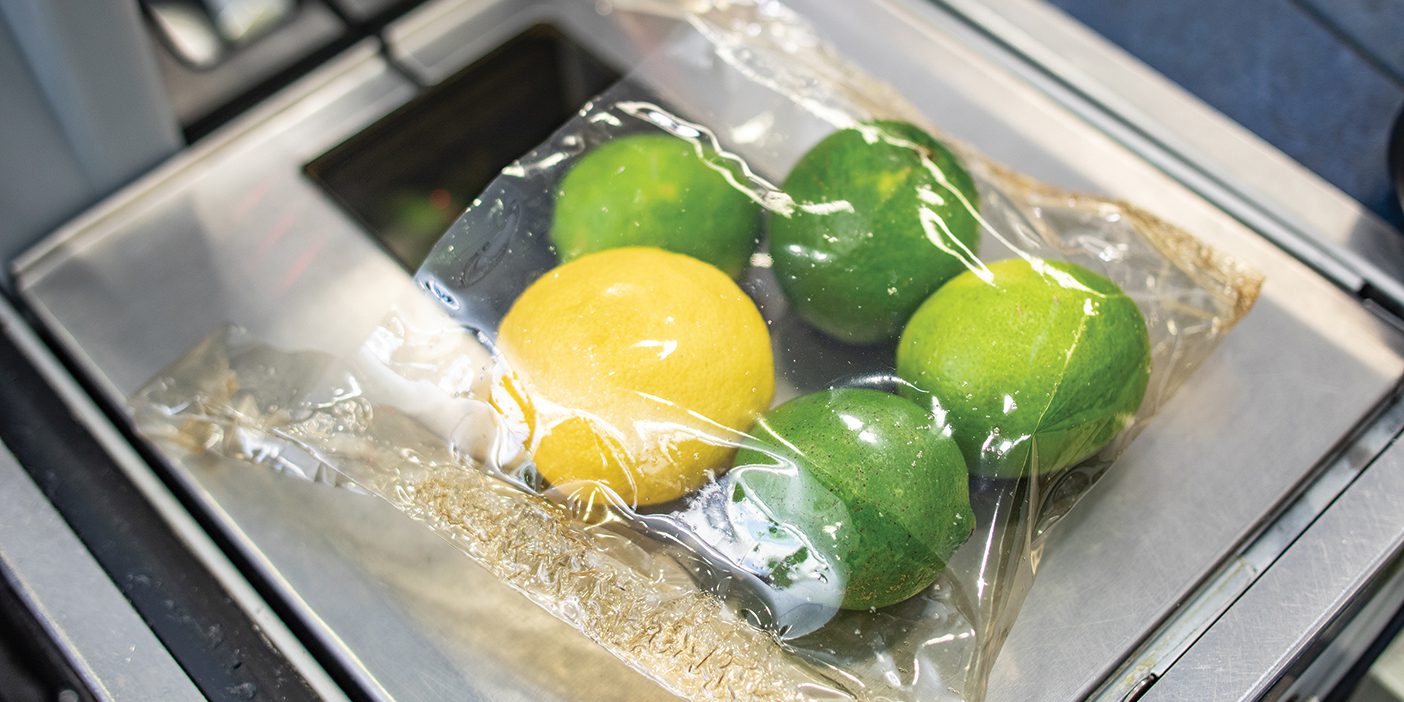Two mountain-loving scientists make the wilds of Glacier National Park their passion.

Only the awe and exhilaration of Going-to-the-Sun Road, a slip of pavement that winds precariously up a cliff’s face toward Logan Pass, could eclipse a driver’s instinct for self-preservation. Vistas of towering, glacier-carved mountains, mass blooms of bear-grass, and waterfalls streaming down rock faces to emerald lakes line this road through the heart of Glacier National Park in Montana. Grizzlies and wolverines, moose and mountain goats, and countless other species occupy this bit of Eden astride the Great Divide.
And so do BYU grads Tara Williams Carolin (BS ’88, MS ’90) and Teagan L. Tomlin (BA ’05, MS ’09), park employees attracted to Glacier by its wild beauty and by scientific curiosity. An ecologist and a geologist, respectively, the two have won coveted positions to study the park, share its wonders with the scientific community and its 3 million annual visitors, and make the case for conservation.
Glacier National Park is a hub for serious science, a place where multiple ecosystems converge. Its lakes and rivers; avalanche habitats; dry and wet microclimates; mix of prairie and alpine plants; and diverse mammal, bird, and fish populations all prime it for research. Water from the park reaches the Pacific and Arctic Oceans and the Gulf of Mexico. Its 26 rapidly melting glaciers—down from 36 in 1966—are global-warming bellwethers. And the impact of Glacier visitors also needs careful monitoring.
Carolin, a park veteran of 23 years, studies that impact as well as the park’s rich ecological niches. As director of the Crown of the Continent Research Learning Center, she vets, manages, and facilitates all scientific research in the park—about 60 to 75 permits a year. She knows better than most the interrelatedness of animal and plant communities. “How do bumblebee populations affect grizzlies?” she asks, then mentions a current USGS study that found six species of bumblebees pollinating park huckleberries. Grizzlies get 15 percent of their diet from huckleberries. Fewer bees means fewer huckleberries, which can affect bear range and behavior.

A 10-credit-hour botany and geology field expedition course at Ricks College fixed Carolin’s future in the natural world. “That was the best semester ever,” she says. “We hiked Teewinot in the Tetons and the Grand Canyon, rim to rim.” That led her to study range management at BYU. She added wildlife as an emphasis, but, being the daughter of a soil scientist, gravitated to botany. While working on her master’s, she received funding to study rare plants in Glacier and never got the place out of her system.
Tomlin, a geologist, educator, and full-time employee since 2016, spent eight summers working in Glacier before her hire. Among other things, she trains the ranger interpreters on communication about geology and climate change—the big pictures, past and present, that frame and shape animal and plant habitats. “We have rocks in our park dated up to 1.5 billion years old,” says Tomlin. “The collision of the oceanic and continental plates made the rocks tilt and bend, then in the Mesozoic—snap!—deep rock thrusted up to form Glacier’s mountains. Its layers tell an incredible story.”
A rock collector for as long as she can remember, Tomlin liked using her dad’s hammer to bust open pieces of gravel to find shiny crystals. At age 8, while exploring a sandy hill in California, she found a 2.5-inch shark’s tooth. She remembers thinking, “We’re 30 minutes from the ocean. How did this get here?” The tooth, which she still has, continues to inspire her. In high school, a passionate science and chemistry teacher created a multiday geology field trip to Yosemite. There “[I] saw a ranger at an evening program play a guitar and dress up like a fly larva,” recalls Tomlin. “I said to myself, ‘I want to teach science in a natural setting too.’” While attending BYU, she figured out how. And when she got an internship at the park and drove into West Glacier, “I was just blown away,” she recalls. She’d hit bedrock. She was home.

In their effort to further scientific inquiry and inform park visitors, Carolin, Tomlin, and the rest of the park’s science team take full advantage of opportunities for citizen science. From bio-blitzes—like a recent mushroom-collecting spree with volunteers and local experts who gathered 130-plus species, 70 of which were new finds—to students and laypeople helping to monitor and collect data on mountain goats, loons, and pikas—the park engages in real science that it publishes and shares. “Citizen scientists have cool experiences,” says Carolin. “In fact, one volunteer watching goats saw a grizzly take down a young kid.” Whether it’s students counting toads or experts evaluating invasive species like zebra mussels or hawkweeds, engagement with nature changes people, says Carolin. “As you learn more about something, you begin to care more about it. That’s a big piece of science literacy.”
Tomlin transforms visitors’ emotional response to the park’s beauty into curiosity about what’s less visible. She says, “If people ask, ‘Why are those rocks red and green?’ it opens up a space to teach.” She uses humor, props, songs, and visuals to get visitors to remember the science. “I like to use geology to give people hope about climate change. The thousands of feet of mud that make up our mountains are individual grains of silt added together; the glaciers made of tiny snowflakes. Little things add up. All of us, with small efforts, can make an impact as we find solutions.”
Glacier’s science lessons stick. “It’s surprising how many people come back to the park and repeat what I told them at a program,” Tomlin says. “They come up and tell me, ‘We remembered! We didn’t forget.’ And that gives me hope.”












